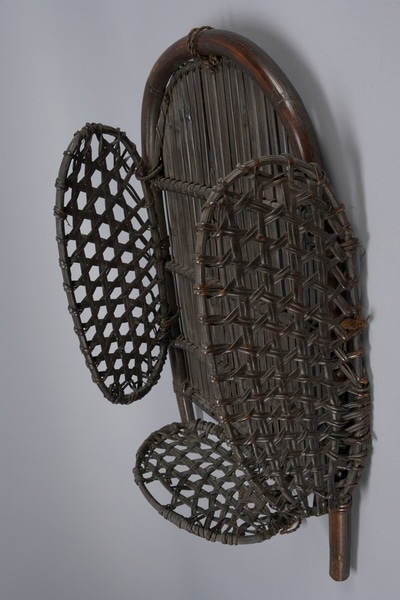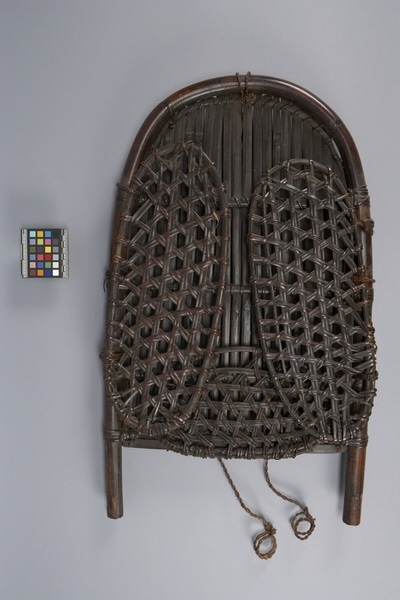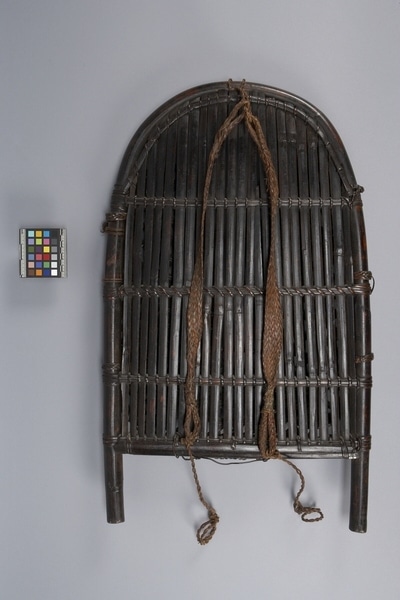Carrier Item Number: Ia25 from the MOA: University of British Columbia



Description
Rattan carrier consists of four joined pieces, and a pair of braided straps. Main back piece is flat ; bent frame in the shape of an inverted u; narrow vertical slats run almost the entire length of the frame. Small lengths of frame are left at the bottom of both sides, these may serve as legs. Slats are lashed to four cross-supports which are attached to the frame with braided rings. Sides are oval panels ; bottom is semi-circular panel; each has own bent frame. The panels are moveable, can fold flat against main piece. Straps are attached at top of main piece and ends loop around 'legs'.
History Of Use
Burden carrier. Basket making remains a living craft among all the northern Luzon peoples. Baskets are used for household storage and for transporting produce from the fields to the habitation sites. Occasionally baskets were made for ceremonial use. Decoration was created with simple interlaced braids and a combination of weaves which also served to provide strength. Ifugao basketry shapes are believed to have been inspired by Chinese jars and pots traded into Luzon before the 16th century.
Item History
- Made in Philippines before 1982
- Owned by Dorian Coe before July 24, 1980
- Received from Dorian Coe (Seller) and Museum of Anthropology Donations Fund (Funding source) on July 24, 1980
What
Who
- Culture
- Ifugao
- Previous Owner
- Dorian Coe
- Received from
- Dorian Coe (Seller) and Museum of Anthropology Donations Fund (Funding source)
Where
- Holding Institution
- MOA: University of British Columbia
- Made in
- Philippines
When
- Creation Date
- before 1982
- Ownership Date
- before July 24, 1980
- Acquisition Date
- on July 24, 1980
Other
- Item Classes
- basketry
- Condition
- good
- Accession Number
- 0638/0024